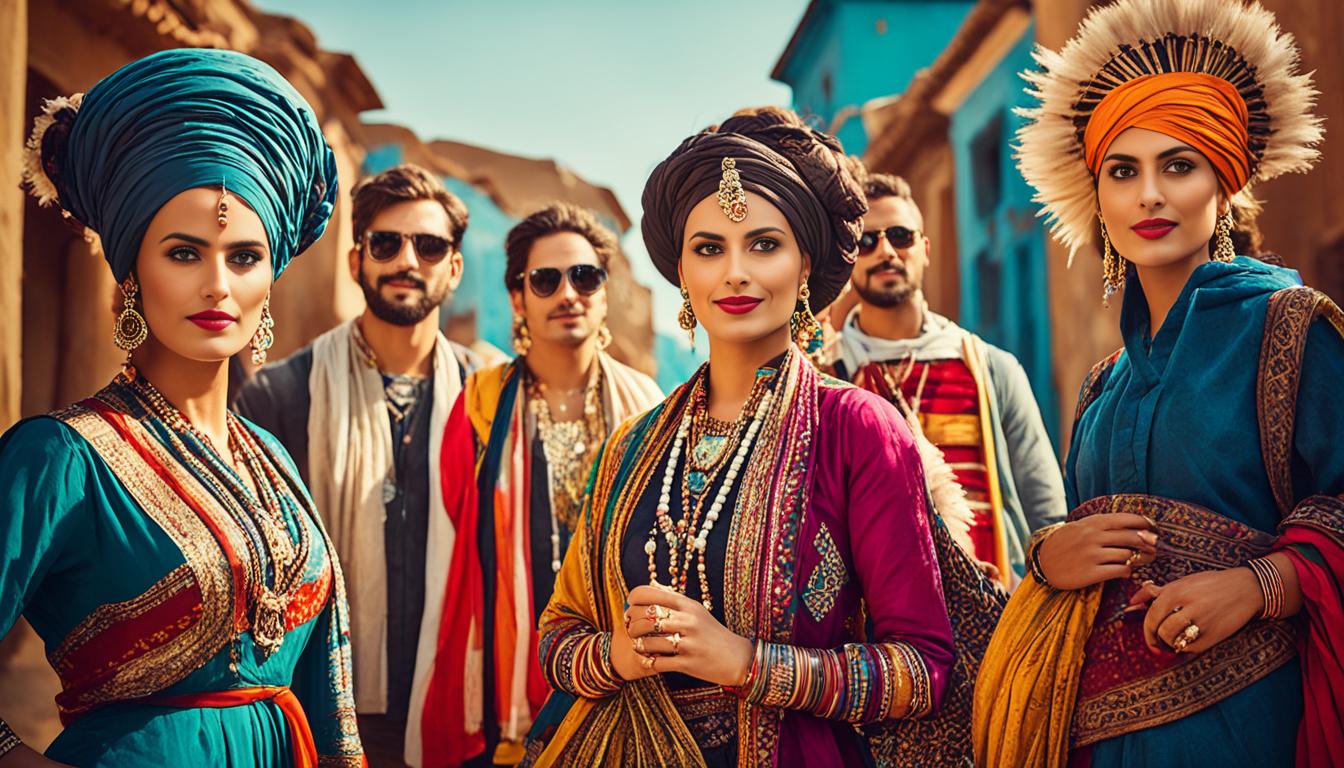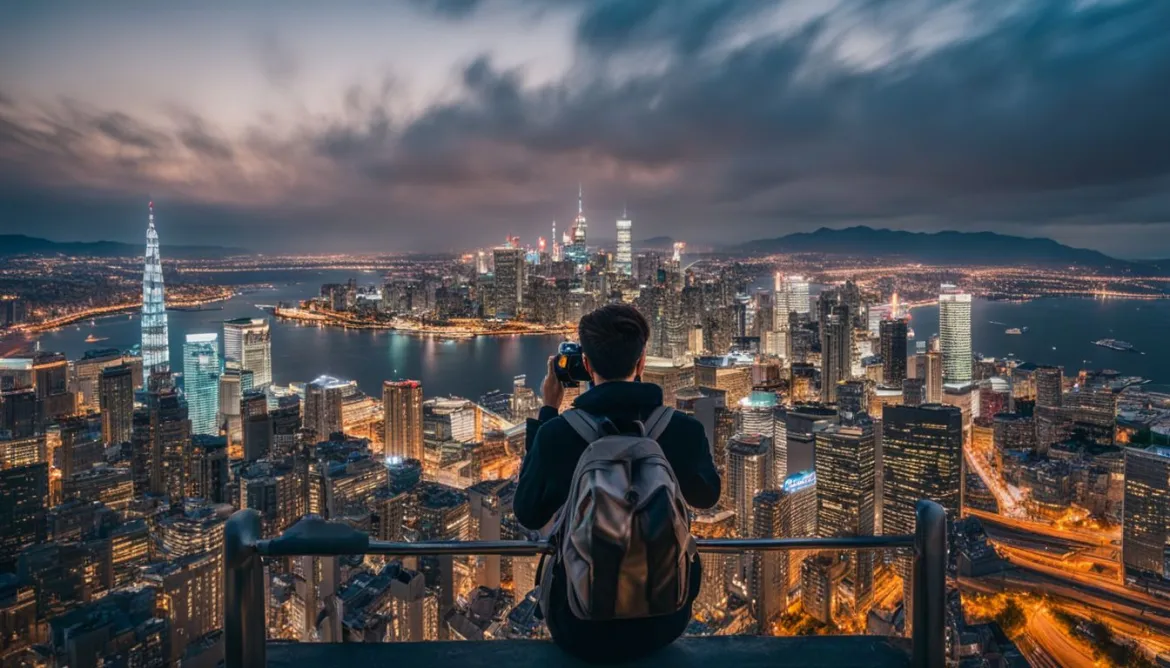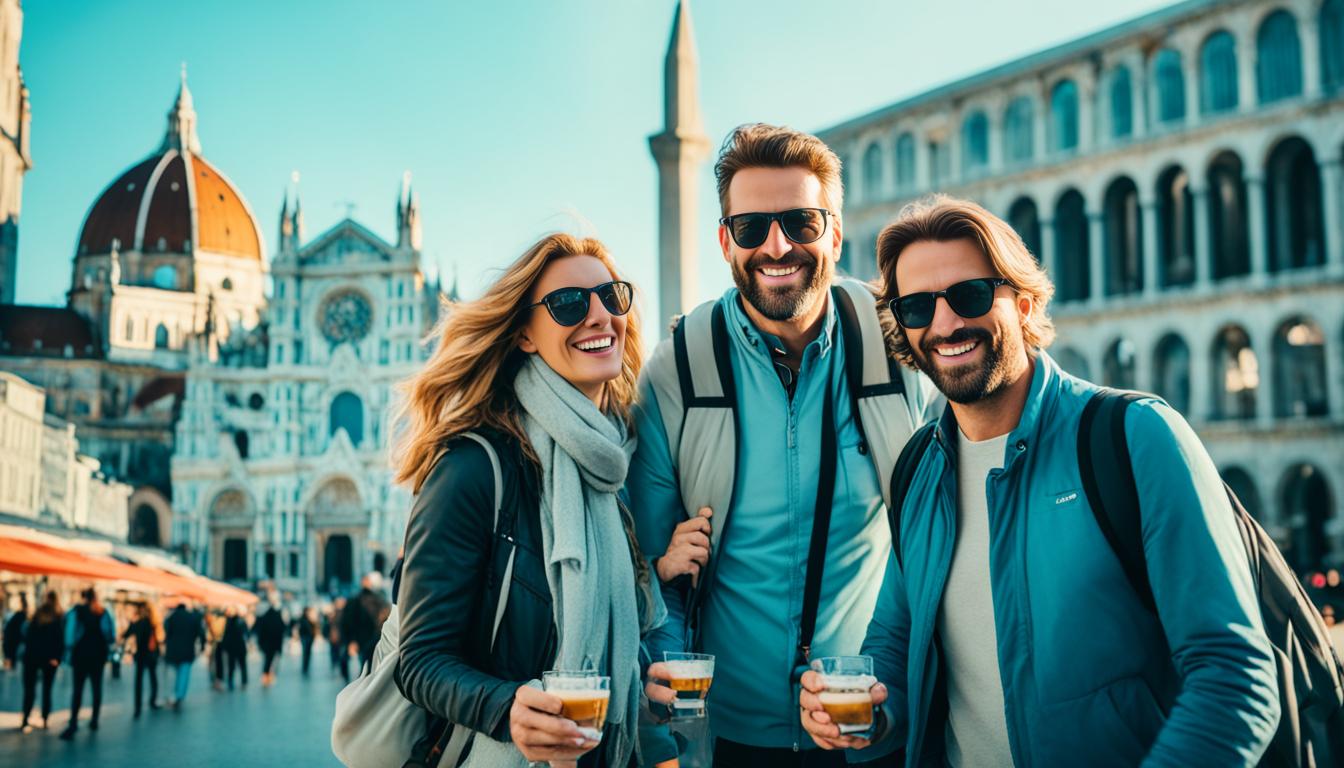In today’s world, portrait photography has the power to connect us with different cultures and capture the beauty of cultural diversity. However, as photographers, it is essential that we navigate this artistic journey with a strong sense of ethics and responsibility. In this article, we will explore the ethical considerations and techniques involved in cross-cultural portrait photography, enabling us to capture the essence of diverse cultures while respecting the dignity of our subjects.
Key Takeaways:
- Cultural sensitivity and respect are vital when photographing individuals from different backgrounds.
- Pay attention to cultural nuances and avoid reinforcing stereotypes in your portraits.
- Obtain consent from your subjects and consider their feelings in the sharing of photographs.
- Apply techniques that empower your subjects and create positive representations of cultural diversity.
- Photographing marginalized communities requires careful consideration to ensure respect and avoid harmful narratives.
Understanding Photography Ethics
In the world of photography, ethics play a crucial role in guiding how we capture and share images. Photography ethics encompass a set of principles that vary from person to person and from one culture to another. These principles are subjective and contextual, shaping the way photographers approach their craft.
While some ethical principles remain resolute, their application can differ depending on the circumstances. For instance, obtaining consent from subjects is an essential ethical consideration. However, the manner in which consent is obtained may vary across different locations.
Ethics within photography also vary across different genres, such as photojournalism and fine art photography. Each genre comes with its own set of ethical considerations. Photojournalism aims for objective representation of events, prioritizing truth and accuracy. Fine art photography, on the other hand, allows for more subjective interpretation, focusing on the artist’s creative vision and personal expression.
The Subjectivity of Photography Ethics
Photography ethics are subjective not only because they vary from person to person, but also because they can be influenced by cultural, societal, and personal factors. What may be considered ethical in one culture or community may not be seen the same way in another.
“Photography ethics are subjective not only because they vary from person to person, but also because they can be influenced by cultural, societal, and personal factors.”
For instance, in some cultures, photographing individuals without their consent may be perceived as a violation of privacy, while in others, it may be deemed acceptable in certain contexts.
The Contextual Nature of Photography Ethics
Context plays a significant role in shaping photography ethics. The ethical considerations that arise in a specific situation depend on various factors, such as the purpose, intended audience, and intended use of the photographs.
While some ethical principles serve as general guidelines, their application may differ depending on the context. To navigate the complexities of ethical decision-making, photographers must critically evaluate the potential impact of their photographs and consider the perspectives and sensibilities of their subjects and audience.
Photography Ethics in Practice
Understanding and implementing photography ethics require a thoughtful and responsible approach throughout the entire photographic process. By considering the ethical implications, photographers strive to maintain dignity, respect, and integrity in their work.
Table: Examples of Ethical Considerations in Photography
| Ethical Consideration | Description |
|---|---|
| Consent | Obtaining permission from subjects or their legal guardians before capturing or sharing their images. |
| Authenticity | Avoiding manipulation or misrepresentation of images to deceive or mislead viewers. |
| Respect for Privacy | Respecting individuals’ privacy rights and refraining from intruding into their personal lives without lawful justification. |
| Sensitivity | Being aware of cultural differences, avoiding stereotypes, and accurately representing diverse backgrounds and experiences. |
| Do No Harm | Avoiding actions that may cause physical, psychological, or emotional harm to individuals or communities. |
By adhering to ethical principles and considering the subjective and contextual nature of photography ethics, photographers can navigate the complex landscape of visual storytelling and create meaningful, responsible, and respectful images that inspire and provoke thought.
Why Photography Ethics Matter
Photography ethics play a crucial role in our practice as photographers. They have the power to either harm or benefit our subjects, influence audience perceptions, and shape the integrity of the entire photography industry. When we prioritize ethics in our work, we prioritize the well-being and dignity of our subjects, while also gaining the trust and credibility of our audience.
By adhering to ethical principles, we ensure that our photographs have a positive impact on the world. Our images can change perspectives, raise awareness, and foster a deeper understanding of different cultures and experiences. However, this power comes with great responsibility. We must approach our work with integrity, always striving to respect and protect the dignity of our subjects.
“Ethics is knowing the difference between what you have a right to do and what is right to do.” – Potter Stewart
When photographers prioritize ethics, they avoid harmful practices such as exploiting their subjects or manipulating images to deceive the audience. This commitment to integrity helps build trust and credibility, allowing us to make a meaningful impact through our photography.
Photographers have the capacity to shape how others view the world. We can challenge stereotypes, depict diverse cultures authentically, and raise awareness about important social issues. By approaching our work ethically, we can ensure that our impact is both meaningful and respectful.
Let us remember the profound impact of our photographs. They can inspire empathy, challenge societal norms, and promote positive change. By embracing photography ethics, we not only elevate our own practice but also contribute to the overall ethical impact of the photography industry.
“The integrity of the photographer – and also of the viewer – requires that we do our utmost to become aware of what drives our curiosity. Can curiosity – the prerequisite for all images – be blind to the harm that our curiosity may cause?” – Anja Schüritz
As photographers, we have a responsibility to use our skills and platforms for good. Let us continue to champion ethical practices, foster trust, and uplift the dignity of our subjects, all through the power of photography.

The Impact of Ethical Photography
Ethical photography not only benefits the subjects and audience but also has a ripple effect on the industry as a whole. When we adhere to photography ethics, we contribute to a culture of trust and integrity within our profession. This, in turn, encourages others to follow suit and promotes the growth of ethical practices in the photography community.
Moreover, ethical photography elevates the value and appreciation of visual storytelling. By producing images that are respectful and meaningful, we create a higher standard for the industry and inspire others to engage with photography in a thoughtful and responsible manner.
| The Impact of Ethical Photography | Benefits |
|---|---|
| Positive representation | Challenge stereotypes and promote inclusivity. |
| Empowerment | Uplift the voices and experiences of marginalized communities. |
| Awareness and education | Raise awareness about social issues and foster understanding. |
| Trust and credibility | Build trust with subjects and audience through ethical practices. |
| Cultural preservation | Document and preserve cultural diversity with respect and integrity. |
Through ethical photography, we can create a positive impact on individuals, communities, and the world at large. Let us embrace this power and continue to prioritize ethics in our photographic endeavors.
Cultural Sensitivity in Portrait Photography
Cultural sensitivity plays a vital role in the realm of portrait photography, particularly when capturing the rich diversity of cultures. As photographers, we must be conscious of and respect cultural differences, while avoiding any actions that may offend or exploit our subjects. Through cultural sensitivity, we can elevate our work to accurately represent and celebrate the unique nuances of different cultures, while fostering mutual respect and understanding.
One of the key considerations in cultural sensitivity is observing cultural taboos to prevent unintentional harm. What may be acceptable in one culture could be offensive or disrespectful in another. For instance, certain gestures, clothing choices, or even specific poses may carry different meanings or be considered inappropriate in different cultural contexts.
To ensure cultural sensitivity, it is important to pay attention to details such as clothing, expressions, and backgrounds. By doing so, we can avoid reinforcing stereotypes or misrepresenting a culture’s beliefs, values, and traditions. Additionally, seeking guidance from locals or engaging in open dialogue with our subjects can provide valuable insights into cultural nuances and help us capture the essence of their culture with accuracy and respect.
“Cultural sensitivity allows us to honor the diversity of human experiences and promote understanding among different cultures.”
By being thoughtful and respectful in our approach, we can create portraits that serve as a bridge between cultures, fostering connection and appreciation. It is through our lens that we have the power to break down barriers, challenge preconceived notions, and promote cultural unity.
In the next section, we will explore specific techniques that can be employed to ensure ethical practices in portrait photography, enabling us to capture the true spirit of diversity and create positive representations of different cultures.
Paying Attention to Cultural Nuances
When photographing individuals from diverse cultures, it is crucial to be attuned to their cultural nuances. These nuances can include body language, facial expressions, and even symbolism in clothing or accessories. By understanding and appreciating these cultural cues, we can capture portraits that authentically reflect the subject’s heritage and identity.
| Cultural Sensitivity Guidelines | Tips for Application |
|---|---|
| Respect Cultural Differences | Research and educate yourself about the culture before the photoshoot. Consider the cultural norms and expectations to ensure you do not inadvertently offend or disrespect your subjects. |
| Avoid Stereotypes | Avoid portraying individuals in a way that reinforces stereotypes or perpetuates cultural biases. In your photographs, strive to showcase the diversity and complexity of different cultures. |
| Seek Consent and Build Trust | Prioritize obtaining informed consent from your subjects for capturing and sharing their portraits. Establishing trust and building rapport can help create a comfortable environment, leading to more authentic and meaningful photographs. |
| Engage in Open Dialogue | Ask questions, listen actively, and engage in conversations with your subjects. By involving them in the creative process and respecting their perspectives, you can develop a deeper understanding of their culture and create portraits that truly reflect their identity. |
Techniques for Ethical Portrait Photography
When it comes to capturing portraits with ethical considerations, there are several techniques that we can employ as photographers to ensure we create powerful and positive representations that empower our subjects, while avoiding stereotypes and respecting their dignity. These techniques allow us to celebrate the diversity of cultures and capture the essence of our subjects in an ethical and responsible manner.
1. Be Conscious of Your Impact
Before pressing the shutter button, take a moment to consider the impact of your photographs and the message they convey. Reflect on how your images may be perceived by different audiences and strive for a positive representation that respects and empowers your subjects. Remember, photography has the power to shape perceptions, so use it to create a meaningful impact.
2. Pay Attention to Angles, Expressions, and Activities
The way you capture your subjects can greatly influence the narrative of the photograph. Experiment with different angles to highlight their unique features and personalities. Be mindful of their expressions and capture moments that authentically portray their emotions. Consider photographing them engaging in activities that showcase their culture and identity.
3. Eliminate Signs of Extreme Poverty
In ethical portrait photography, it is important to avoid perpetuating stereotypes or reinforcing negative narratives. While capturing the living conditions of marginalized communities, focus on showcasing their strength and resilience rather than exploiting their hardships. Eliminate signs of extreme poverty that may contribute to the “poverty porn” narrative, which objectifies and dehumanizes individuals.
4. Avoid Reinforcing Stereotypes
As photographers, we have the responsibility to challenge and break stereotypes. Avoid capturing subjects in a way that reinforces preconceived notions or portrays them in a negative light. Instead, capture the diversity and unique aspects of their culture, highlighting their individuality and challenging stereotypes.
5. Empower Your Subjects
Portrait photography has the power to empower and uplift. Before capturing a subject, put yourself in their place and consider their feelings. Empower your subjects by highlighting their strengths, achievements, and positive contributions to their community. By doing so, you can create portraits that not only represent them accurately but also inspire others.
6. Seek Consent and Feedback
Respecting the autonomy of your subjects is crucial in ethical portrait photography. Always seek their consent before capturing and sharing their images. If in doubt, have open and respectful conversations with them, seeking their feedback and ensuring that they are comfortable with how they are represented. This collaborative process enhances the trust between you and your subjects.
“Photography takes an instant out of time, altering life by holding it still.”
– Dorothea Lange
By employing these techniques, we can create ethical portrait photography that captures the beauty of diversity, challenges stereotypes, and empowers our subjects. Let’s embrace our role as photographers and use our art to make a positive impact in the world.
| Technique | Description |
|---|---|
| Be Conscious of Your Impact | Consider the message and impact of your photographs before capturing them. |
| Pay Attention to Angles, Expressions, and Activities | Experiment with different angles, capture authentic expressions, and showcase cultural activities. |
| Eliminate Signs of Extreme Poverty | Avoid perpetuating stereotypes by focusing on strength and resilience rather than extreme poverty. |
| Avoid Reinforcing Stereotypes | Challenge stereotypes by highlighting diversity and breaking preconceived notions. |
| Empower Your Subjects | Showcase the strengths and positive contributions of your subjects. |
| Seek Consent and Feedback | Respect the autonomy of your subjects by seeking their consent and feedback. |
The Role of Ethics in Photographing Marginalized Communities
Photographing marginalized communities requires an even greater emphasis on ethics. As photographers, we have a responsibility to ensure that our work respects the individuals we portray, their autonomy, and their dignity. Unfortunately, many photographers have unintentionally perpetuated harmful narratives and reinforced stereotypes through their images. This is particularly evident in the category known as “poverty porn,” where poverty is exploited to gain sympathy from viewers.
In order to avoid exploitation and promote positive representation, we must approach photographing marginalized communities with respect and sensitivity. It is essential to accurately represent their circumstances and steer clear of objectifying or degrading them. These individuals are not defined solely by their challenges, but are leaders and co-laborers deserving of respect.
In order to achieve this, here are some key principles that we should keep in mind:
- Respect and Dignity: Treat every individual in the marginalized community with the utmost respect and dignity. Remember that they are unique individuals with their own stories and experiences.
- Avoiding Harmful Narratives: Be aware of the narratives that your photographs may perpetuate and avoid reinforcing harmful stereotypes. Take the time to understand the culture and context of the community you are photographing.
- Consent and Collaboration: Seek consent from the individuals you are photographing and involve them in the process. This ensures their participation and allows them to shape their own representation.
- Empowerment: Capture images that empower the marginalized community, showcasing their strengths and resilience. Focus on their achievements and contribute to positive narratives.
By following these ethical guidelines, we can use photography as a tool for positive change and to challenge unjust narratives. Our images have the power to bring awareness, promote empathy, and create meaningful connections between cultures.
“Photographing marginalized communities is a privilege and a responsibility. It is crucial to approach it with respect, empathy, and an understanding of the power dynamics involved.” – Photographer Name
| Exploitative Approaches | Ethical Approaches |
|---|---|
| Showcasing poverty as the sole aspect of a community’s identity | Capturing a diverse range of moments that reflect the community’s multifaceted nature |
| Objectifying subjects and reducing them to symbols of suffering | Focusing on individuals’ personal stories, aspirations, and achievements |
| Prioritizing shock value rather than respectful representation | Promoting understanding, empathy, and awareness through thoughtful portrayals |
| Ignoring the voices and perspectives of the community | Involving and collaborating with community members to shape their own representation |

Photographing marginalized communities is a complex task that requires sensitivity, empathy, and an unwavering commitment to portraying them with respect. By consistently applying ethical principles, we can ensure that our images contribute to positive change, challenge stereotypes, and inspire a more inclusive and compassionate world.
Capturing Diversity with Ethics and Techniques
Embracing ethical practices in portrait photography allows us to capture the diversity of cultures with respect and artistic integrity. We understand the importance of being culturally sensitive and applying ethical principles to avoid harm and exploitation. By doing so, we can capture the true essence of different cultures in a positive and empowering way.
Techniques play a crucial role in enhancing the ethical impact of portrait photography. We pay meticulous attention to details, ensuring that our photographs avoid stereotypes and represent the subjects in a positive light. Seeking consent from our subjects further ensures that our photographs respect their dignity and autonomy.
Ultimately, ethical portrait photography provides us with a powerful tool to communicate a global perspective, celebrate cultural diversity, and create meaningful connections between cultures through the power of images. By capturing diversity with ethics and techniques, we contribute to a more inclusive and understanding world.
FAQ
What are photography ethics?
Photography ethics refer to the principles that guide how photographers take and share photographs. These principles are subjective and contextual, varying from person to person and from one culture to another.
Why do photography ethics matter?
Photography ethics matter because they can either harm or benefit our subjects, influence audience perceptions, and impact the integrity of the photography industry as a whole.
How can photographers practice cultural sensitivity in portrait photography?
By being aware of cultural differences, respecting cultural nuances, and avoiding offensive or exploitative representations, photographers can demonstrate cultural sensitivity in their portrait photography.
What techniques can photographers use for ethical portrait photography?
Techniques such as paying attention to details, avoiding stereotypes, and seeking consent from subjects are some of the ways photographers can ensure ethical portrait photography.
What is the role of ethics when photographing marginalized communities?
When photographing marginalized communities, it is crucial to respect the autonomy and dignity of the subjects, accurately represent their circumstances, and avoid exploiting or degrading them.
How can photographers capture diversity in portraits with ethics and techniques?
By being culturally sensitive, avoiding stereotypes, and representing subjects in a positive and empowering way, photographers can capture the diversity of cultures with respect and artistic integrity.
How Do Ethical Considerations Differ in Global Portrait Photography Compared to Landscape Photography?
When it comes to ethical landscape photography considerations, capturing portraits around the world brings unique challenges. Respecting cultural norms and gaining consent from subjects is crucial in global portrait photography. In contrast, landscape photography often centers on preserving natural beauty and respecting the environment. Both require sensitivity and ethical awareness.




